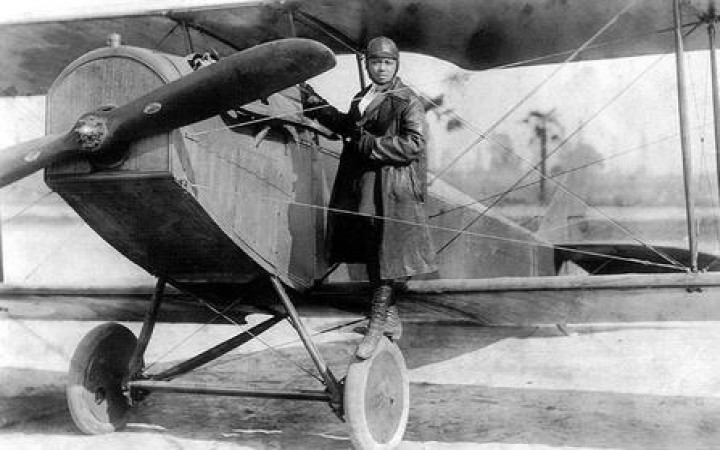Today’s Wonder of the Day was inspired by Misty from Lakewood. Misty Wonders, “Who was Bessie Coleman?” Thanks for WONDERing with us, Misty!
Today’s Wonder of the Day is about a pioneer in aviation. She worked hard for many years to make her dream of becoming a pilot come true. In fact, she was the first Black woman and first woman of Cherokee and Choctaw descent to become a pilot. That’s right! We’re talking about Bessie Coleman.
Bessie Coleman was born in Atlanta, Texas, in 1892. She was one of 13 siblings. Coleman’s mother worked as a maid, and her father worked as a sharecropper. In 1901, Coleman’s father left the family. He moved to Oklahoma in an attempt to escape the Jim Crow South.
As a kid, Coleman loved reading and spending time at the library. She also found time to help support her family by working in cotton fields and doing laundry. She also saved enough money to go to Langston University at the age of 18. However, she left college after a semester because of the high cost.
Five years later, Coleman moved to Chicago. There, she lived with two of her older brothers and went to the Burnham School of Beauty Culture. She began working as a manicurist. In 1917, the U.S. entered World War I. Both of Coleman’s brothers joined the military and left for France.
Upon their return, Coleman’s brothers told her stories about life in France. Bessie learned that women there had more opportunities than most American women. Coleman was especially interested in her brothers’ stories of French women who flew airplanes.
Inspired by these stories, Coleman set out to become a pilot herself. She applied to several flying schools across the U.S. Each one turned her away due to her race and gender. Coleman decided that if American schools wouldn’t teach her to fly, she’d find a school elsewhere that would. That’s when she began learning to speak French.
Around the same time, Coleman built a friendship with Robert Abbott, owner of the “Chicago Defender” newspaper. Abbott was also one of America’s first Black millionaires. When Coleman was accepted to France’s Caudron Brother’s School of Aviation, Abbott helped her move overseas.
Seven months later, Bessie Coleman became the first Black woman in the world to earn a pilot’s license. She also had ancestors in the Choctaw and Cherokee Nations on her father’s side of the family. This made her the first woman of American Indian descent to be a pilot as well.
Soon, Coleman made a name for herself in both Europe and the United States. She wowed audiences with her tricks, making loops and figure eights in the sky. People came from all around to watch her fly, calling her “Brave Bessie” and “Queen Bess.”
Coleman wasn’t only an entertainer, though. She also stood up against segregation and other forms of discrimination. On at least one occasion, she refused to perform at a venue until it let Black people enter through the same door as white people.
Sadly, Coleman’s life was cut short on April 30, 1926. That day, she set out on a test flight with a pilot named William Wills. Wills was flying the plane when it experienced an engine issue. He lost control, and the plane unexpectedly flipped upside-down, throwing Coleman from the cockpit. She fell 3,000 feet. Neither Coleman nor Wills survived the incident.
Today, people remember Bessie Coleman not just for her skills in the air, but also for encouraging other Black Americans—and especially women—to fly. In 1977 a group of Black women who were pilots formed the Bessie Coleman Aviators Club. The Challenger Pilots’ Association of Chicago also remembers Coleman by flying over her grave each year.
Do you dream of becoming a pilot? Could you become as famous as Bessie Coleman one day? Maybe! Thanks to pioneers like Coleman, the sky’s the limit today!
Standards: C3.D2.His.2, CCRA.R.1, CCRA.R.2, CCRA.R.4, CCRA.R.10, CCRA.W.2, CCRA.W.4, CCRA.W.7, CCRA.W.9, CCRA.W.10, CCRA.L.1, CCRA.L.2, CCRA.L.3, CCRA.L.6, CCRA.SL.1, CCRA.SL.2




